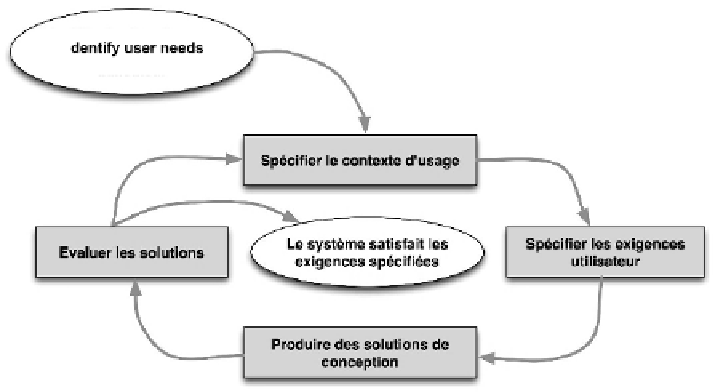Information Technology Reference
In-Depth Information
Figure 11.1.
User-centered design for a context of use specified before the design
process takes place: ISO norm 13407 (figure translated from [ISO 99])
The following section structures the key elements of UI evolution in ambient
intelligence [CAL 06], [CAL 07a], [CAL 07b]. Section 11.3 shows how UI
plasticity acts as an integrator for these evolutions from a user's perspective.
Plasticity is then illustrated in the field of transport, which proves to be an extremely
fertile application framework. Section 11.4 adopts the system viewpoint. Section
11.5 presents a problem space that covers both the user's and the system's
viewpoints. A number of questions remain open, giving rise to numerous issues for
further research.
11.2. Evolution of human-computer interaction
Calvary
et al
. [CAL 06] identified the key elements for the metamorphosis of
human-machine interaction in ambient intelligence. This section proposes a review
of this and organizes its dimensions according to three factors: the diversity of
interaction resources, their dynamicity and human control.
11.2.1.
Diversity of interaction resources
Lyytinen and Yoo [LYY 02] structure the evolution of information technology
(ICT) according to two axes (see Figure 11.2a):
mobility
and
integration
into the
physical world.
Mobility
refers to the success of pocket computers (personal









